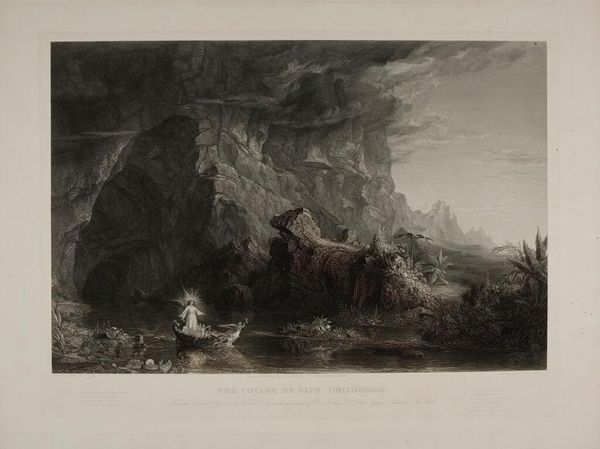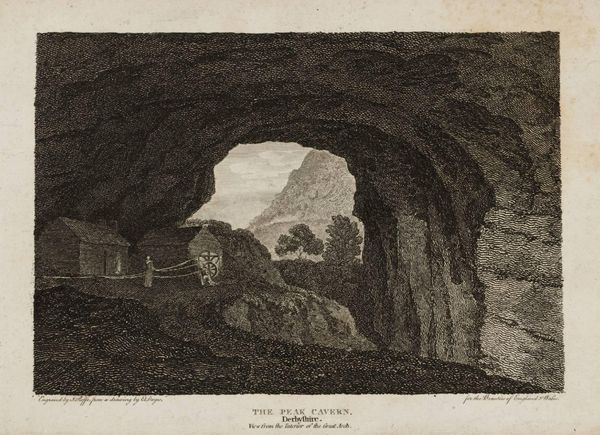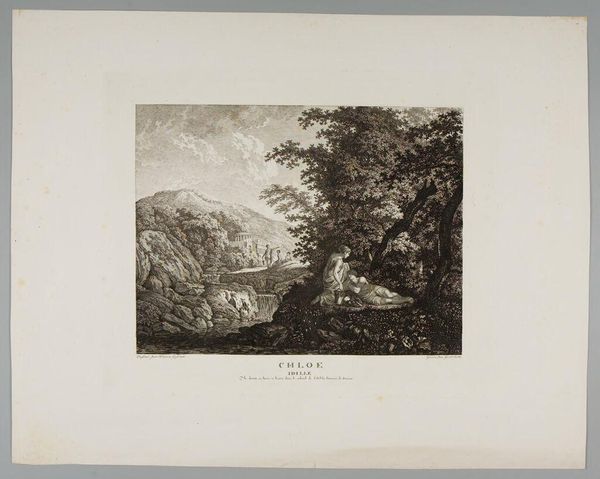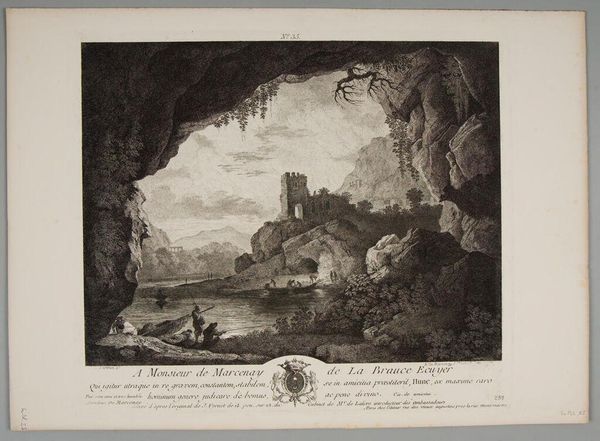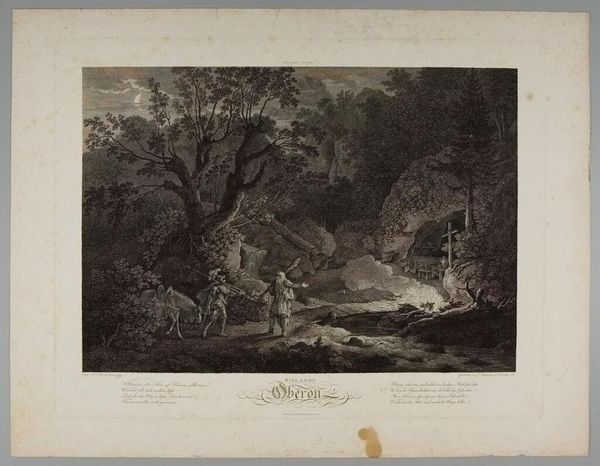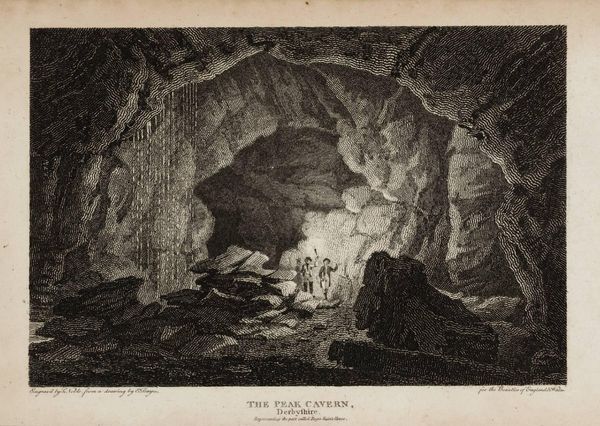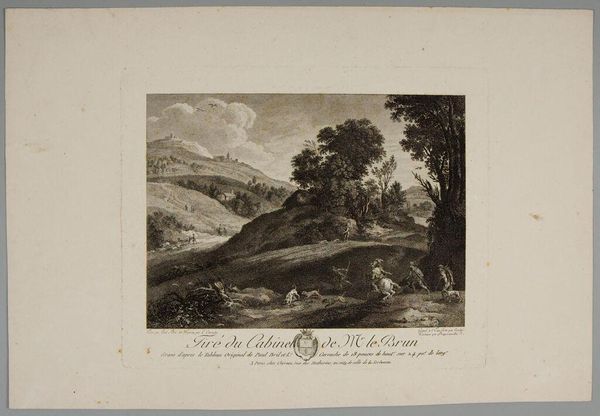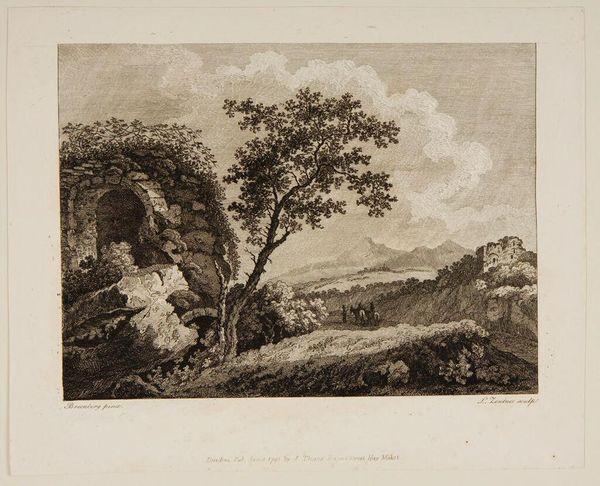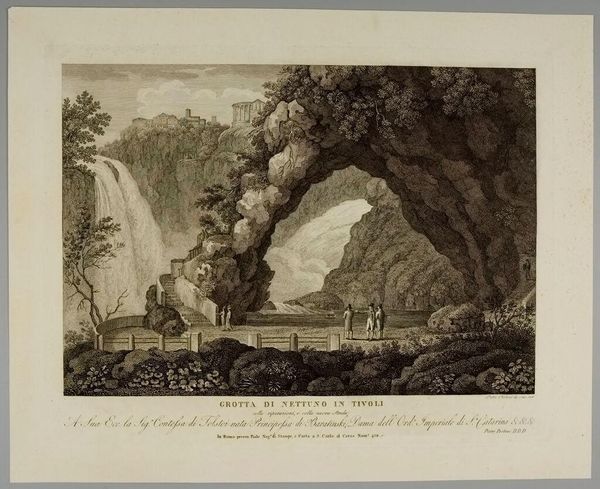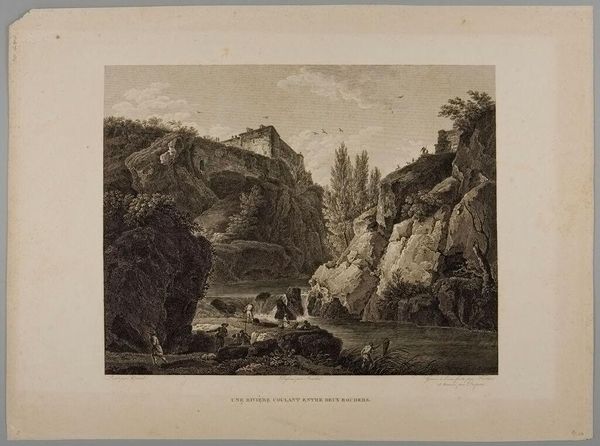
Copyright: CC0 1.0
Curator: Here we have Adrian Zingg's "Morning," housed here at the Harvard Art Museums. Editor: What strikes me first is the stark contrast between the shadowed cave and the bright landscape beyond; it's quite dramatic. Curator: Indeed. Zingg's masterful use of light and shadow creates depth. The eye is drawn from the dark cave, almost a protective enclosure, into the open expanse where figures and livestock gather. Editor: It suggests a transition, maybe a shepherd leading their flock from a place of shelter into the day's labor. The engraving captures a pastoral scene but also hints at broader social relations, particularly human labor. Curator: The linear precision in the rendering of the rocks and foliage indicates a meticulous observation of natural forms, refined into an idealized composition. Editor: But idealized for whom? These picturesque scenes often glossed over the realities of rural life, presenting a romanticized view of labor and land ownership. Curator: A valid point. Ultimately, the artwork demonstrates a sophisticated understanding of pictorial space and the aesthetic possibilities of engraving. Editor: And it raises critical questions about the power dynamics embedded in landscape art of this period.
Comments
No comments
Be the first to comment and join the conversation on the ultimate creative platform.
